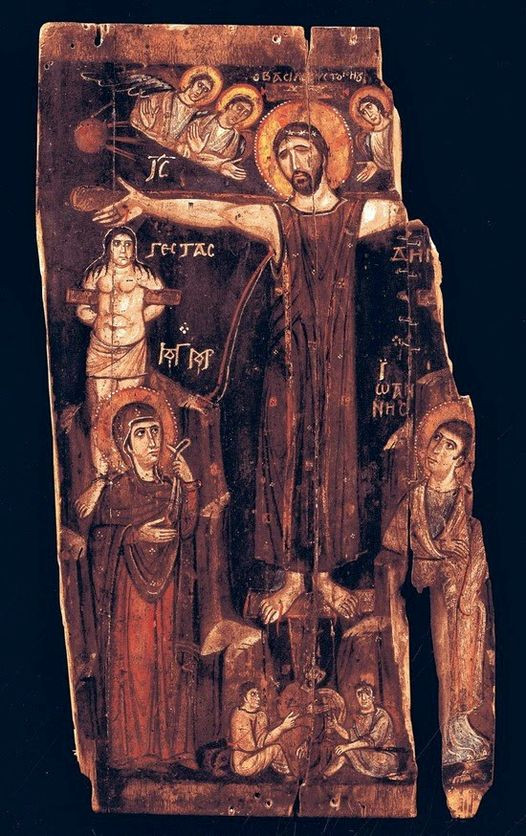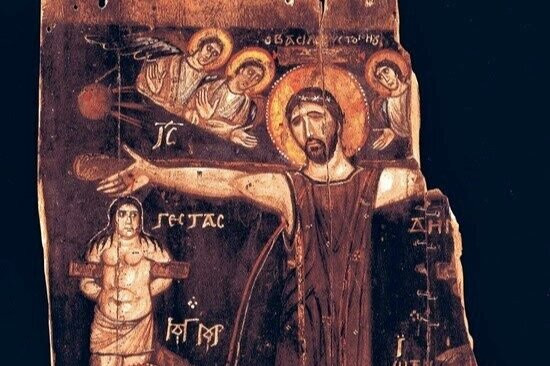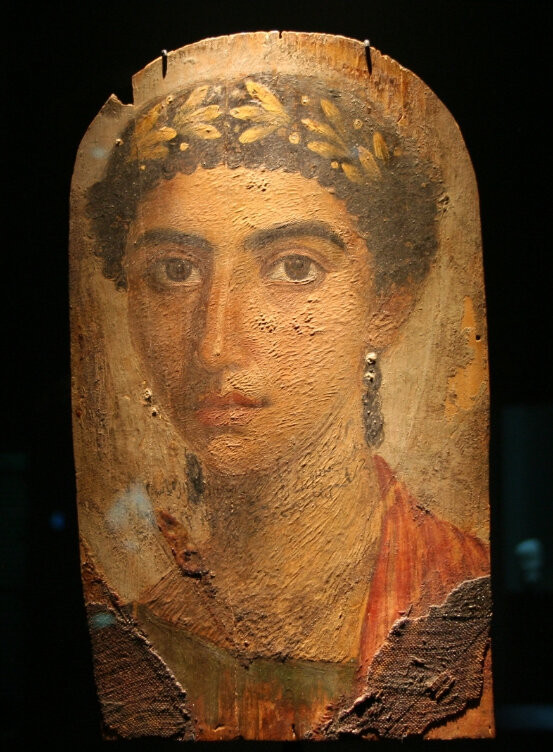A Timeless Masterpiece on Mount Sinai
Nestled in the heart of Egypt’s Sinai Peninsula, within the hallowed walls of the Greek Orthodox Holy Monastery, lies a masterpiece that bridges history, faith, and art. The St. Catherine icon, a striking panel painting of the crucified Christ, serves as a timeless testament to the union of Greco-Roman artistic traditions and early Christian iconography. Its presence at this historic monastery captivates art historians and theologians alike, inviting reflection on its role in the evolution of religious art.

A Window into Early Christian Art
The St. Catherine icon is more than a religious artifact; it is a rare window into the nascent stages of Christian art. As one of the few surviving examples from this formative period, it combines the narrative power of Christian theology with the aesthetic sensibilities of classical art. Depicting Christ on the cross, surrounded by figures from the Passion story, the icon transcends its function as a devotional object, embodying a blend of spirituality and artistic sophistication.
The Greco-Roman Legacy
Naturalism and Emotion
The artist behind the icon reveals a deep mastery of Greco-Roman techniques, evident in the anatomical precision of Christ’s form on the cross. Through the use of chiaroscuro—contrasting light and shadow—the artist breathes life into the two-dimensional plane, creating depth and volume.

The surrounding figures, such as the grieving Virgin Mary and the anguished John the Evangelist, exude emotional intensity reminiscent of Hellenistic sculpture. Their sorrowful expressions and dramatic postures draw viewers into the poignant moment, forging a connection between the human and the divine.
From Fayum to Sinai
The icon’s stylistic lineage is a testament to the enduring influence of ancient art. It draws inspiration from the haunting Fayum mummy portraits and the vivid frescoes of Pompeii, both hallmarks of Greco-Roman visual culture. The elongated noses, expressive eyes, and understated mouths seen in these earlier works echo in the faces of the St. Catherine icon, illustrating a continuity that transcends cultural and temporal boundaries.

A Christian Vision
Symbolism and Faith
Though its artistic roots lie in the classical world, the St. Catherine icon is unmistakably Christian in essence. Every detail of the composition is imbued with theological meaning. Christ, at the center, serves as the focal point, emphasizing the centrality of the Crucifixion in Christian belief. The placement of figures, the choice of colors, and the careful interplay of light and shadow all work together to underscore the spiritual significance of the scene.
A Bridge Between Worlds
The St. Catherine icon represents more than a work of art; it is a cultural bridge, uniting the classical beauty of Greco-Roman art with the spiritual depth of Christianity. It marks a pivotal moment in history, where the artistic heritage of antiquity was embraced and transformed to serve the emerging Christian faith.

For those fortunate enough to visit the Holy Monastery of St. Catherine and gaze upon this ancient work, the experience transcends mere observation. It is an encounter with the birth of a new artistic tradition, one that continues to shape the visual language of Christianity to this day.
In the St. Catherine icon, we see more than paint on wood. We see the legacy of a profound cultural exchange—a timeless fusion of art and faith that continues to inspire and enlighten across centuries.

